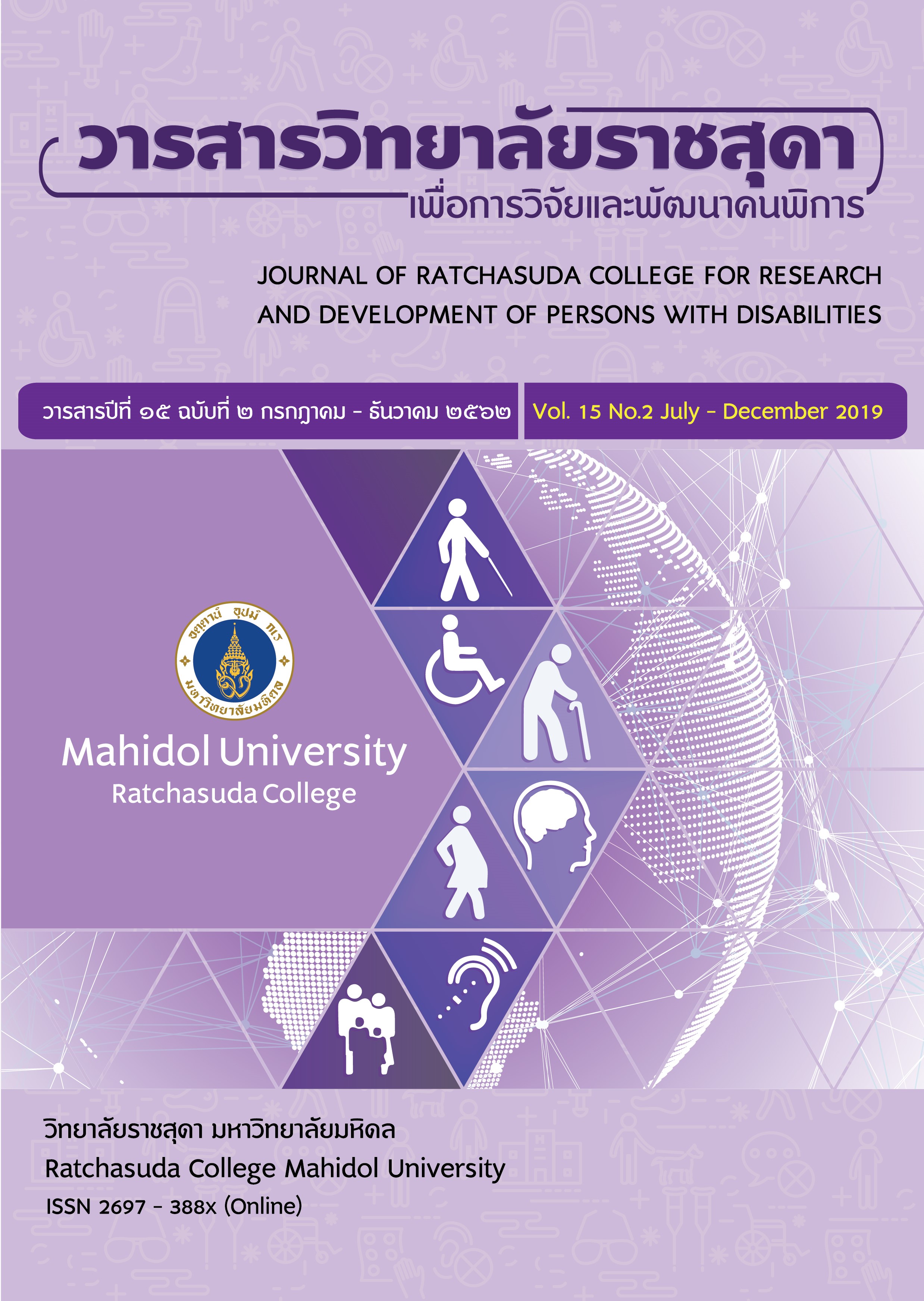Livelihood Strategies of Laotian Women with Disabilities Households after Training from the Vocational Training Center in Vientiane Capital, Lao PDR
Keywords:
Livelihood Strategy, Laotian Women with Disabilities Households, Vientiane CapitalAbstract
The aim of this qualitative research is to study the livelihood strategies of Laotian Women with Disabilities’s households after training from the vocational training in center Vientiane Capital, Lao PDR. Analytical framework was developed from Sustainable Livelihoods Framework (SLF). Unit of analysis is household level. Data were collected from 16 Laotian Women with Disabilities from household in Vientiane Capital, Lao PDR by in-depth interview and non-participatory observation. Key informants were selected by purposive sampling. The qualitative data were analyzed by content analysis with Sustainable Livelihoods Framework (SLF). The quality of data was approved by triangulation method.
The research results found that household of Laotian Women with Disabilities after The research results found that household of Laotian Women with Disabilities after training from the Vocational Training Center used the assets as Human capital, Social capital, Physical capital and Financial capital to set up the suitable strategy together in order to achieve all 4 livelihood strategies; (1) Investment strategy: a way of using human capital such as personal skill or knowledge gained from on job training as the main asset to independently make a living for oneself and family. (2) Struggling strategy: a way of using human capital to overcome the physical health limitations and gain some occupational skill or knowledge which could contribute to a daily livelihood. (3) Problem-solving strategy: a way of using social capital such as network with social orgsnization which could provide aid or advice when in a crisis. (4) Sustainable strategy : a way of integrating human capital, social capital, physical capital and financial capital together in order to create livelihood security for Laotian female disable and her household.
Downloads
References
Chanmanee, T. (2012). Livelihoods Strategies of Peasants becoming Plated Gold Entrepreneurs. Thesis of Master of Art in Sociology Development. Khon Kaen University, Khon Kaen, Thailand.
De Haan, L. (2005). How to Research the Changing outline of African Livelihood. Maputo: African Sudies Center Leiden.
Department for International Development. (1999). Sustainable Livelihoods Guidance Sheet. London: Department for International Development (DFID).
Devereux, S. (2001). Livelihood Insecurity and Social Protection: ARe-emerging Issue in Rural Development, Development Policy Review, 19(4), 507-519.
Gera, P.; Sudhir, S. & Mohan, H. (2012). Livelihood Opportunities for Persons with Disabilities. New Deli: UNDP India.
Jutawiriya, K. & Laphanant, P. (2014). Integrated Agriculture: Livelihood Strategies of Isan Farmers under Globalization. Journal of Mekong Societies, 10(3), 25-48.
Lao Disabled Women Development Centre. (2017). Enabling and Disabling. Retrieved January 15, 2017, from http://laodisabledwomen.com.
Nokrek, P.; Alam, A. & Ahmed, M. (2013). Livelihood Challenges for Extremely Poor Disabled People in the Southwest Coastal Region of Bangladesh. Dhaka: Shiree.
Pangjoy, W. (2010). Guide Line for Promotion and Development for Quality of Life of Disable. Independent Study of Master of Art in Local Administration. Khon Kaen University, Khon Kaen, Thailand.
Phengthavy, T. & Chamaratana, T. (2019). Vulnerability Context of Laos Disable Women Households in Vientiane Capital, Lao PDR, KKU International Journal of Humanities and Social Sciences, 9(1), 111-131.
Phongsiri, M. (2014). Livelihood Strategies of Return Thai Diaspora in Thai Society. Dissertation of PhD. in Sociology. Khon Kaen University, Khon Kaen, Thailand.
Rakodi, C. (1999). A Capital Asset Framework for Analyzing Household Livelihood Strategies: Implications for Policy, Development Policy Review, 1(17), 315-342.
Swift, J. (1989). Understanding and Preventing Famine and Famine Mortality. Retrieved January 15, 2017, from http://www3.interscience.wiley.com/journal/122396109.
Downloads
Published
How to Cite
Issue
Section
License
บทความที่ได้รับการตีพิมพ์เป็นลิขสิทธิ์ของวารสารสถาบันราชสุดาเพื่อการวิจัยและพัฒนาคนพิการ






